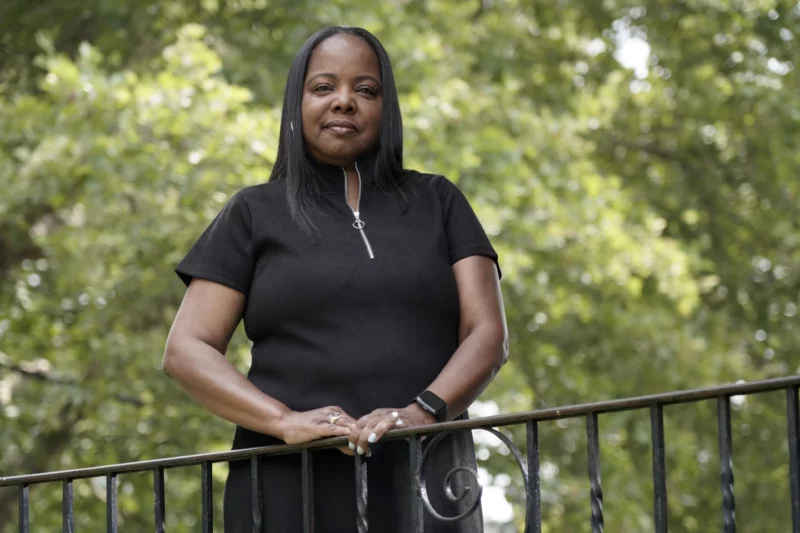More teachers are quitting their jobs. Educators of color often are more likely to leave
Share
Explore Our Galleries
Breaking News!
Today's news and culture by Black and other reporters in the Black and mainstream media.
Ways to Support ABHM?
By Marc Levy, AP News

HARRISBURG, Pa. (AP) — Rhonda Hicks could have kept working into her 60s. She loved teaching and loved her students in Philadelphia’s public schools. As a Black woman, she took pride in being a role model for many children of color.
But other aspects of the job deteriorated, such as growing demands from administrators over what and how to teach. And when she retires in a few weeks, she will join a disproportionately high number of Black and Hispanic teachers in her state who are leaving the profession.
“I enjoy actually teaching, that part I’ve always enjoyed,” said Hicks, 59. “Sometimes it’s a little stressful. Sometimes the kids can be difficult. But it’s the higher-ups: ‘Do it this way or don’t do it at all.’”
Teachers are leaving jobs in growing numbers, state reports show. The turnover in some cases is highest among teachers of color. A major culprit: stress — from pandemic-era burnout, low pay and the intrusion of politics into classrooms. But the burdens can be heavier in schools serving high-poverty communities that also have higher numbers of teachers of color.
In Philadelphia, a city with one of the highest concentrations of Black residents in the U.S., the proportion of Black teachers has been sliding. Two decades ago, it was about one-third. Last fall, it fell to below 23%, according to district figures.
In the school buildings where Hicks taught, most teachers were white. She said she and other teachers of color were expected to give more of themselves in a district where half the students are Black.
“A lot of times when you see teachers that are saving Black and brown kids on TV, it’s always the white ones,” Hicks said. “There are Black teachers and Hispanic teachers out there that do the same thing in real life, all the time.”
Read more about the adversity teachers of color face during their careers in the original article.
Learn about the history of education for Black students in this virtual exhibit.
Find more Breaking News stories here.











Comments Are Welcome
Note: We moderate submissions in order to create a space for meaningful dialogue, a space where museum visitors – adults and youth –– can exchange informed, thoughtful, and relevant comments that add value to our exhibits.
Racial slurs, personal attacks, obscenity, profanity, and SHOUTING do not meet the above standard. Such comments are posted in the exhibit Hateful Speech. Commercial promotions, impersonations, and incoherent comments likewise fail to meet our goals, so will not be posted. Submissions longer than 120 words will be shortened.
See our full Comments Policy here.